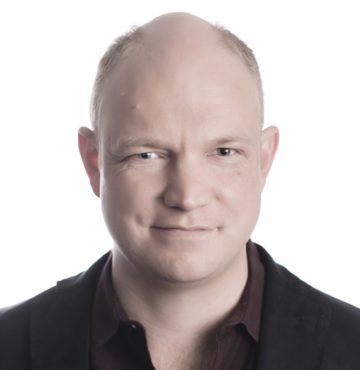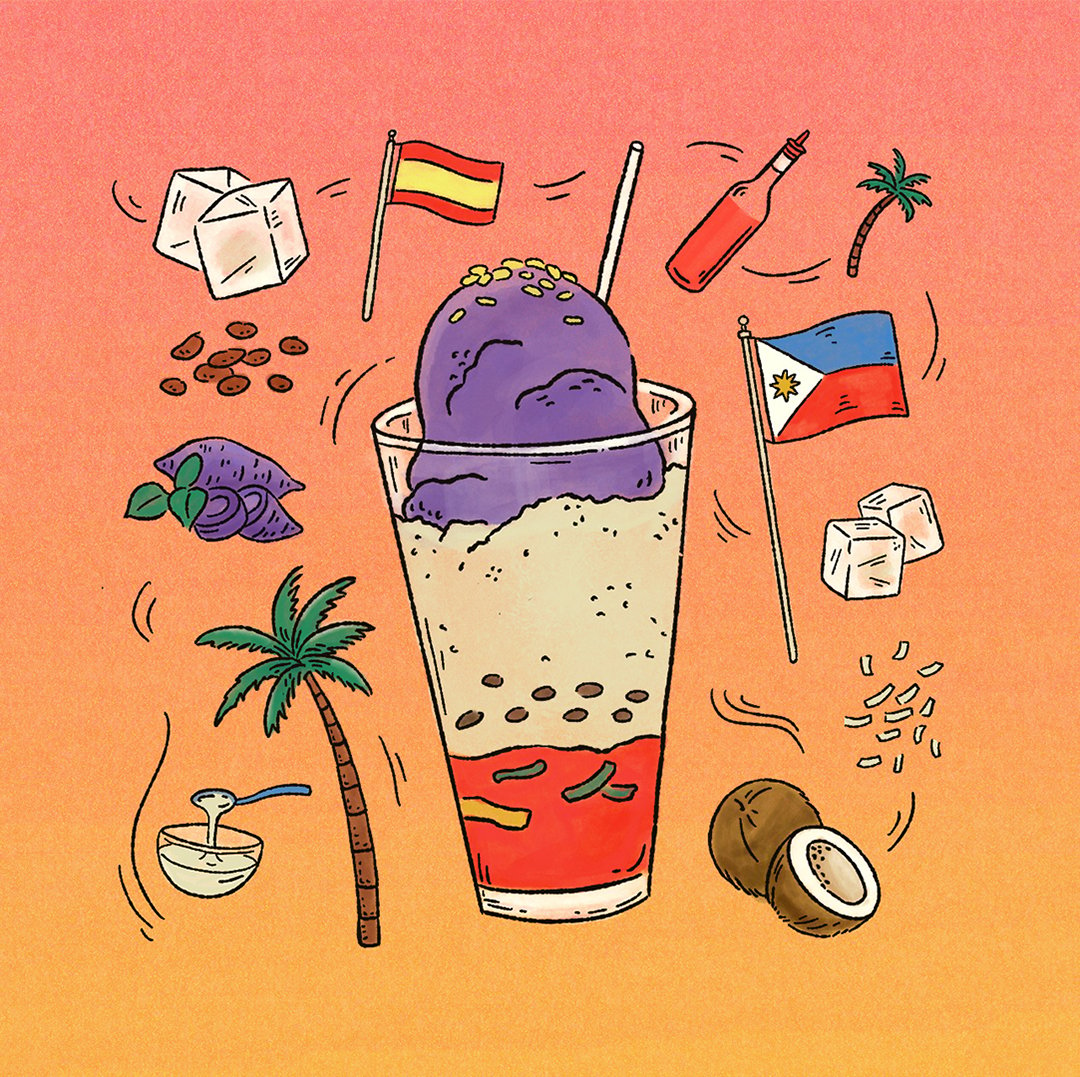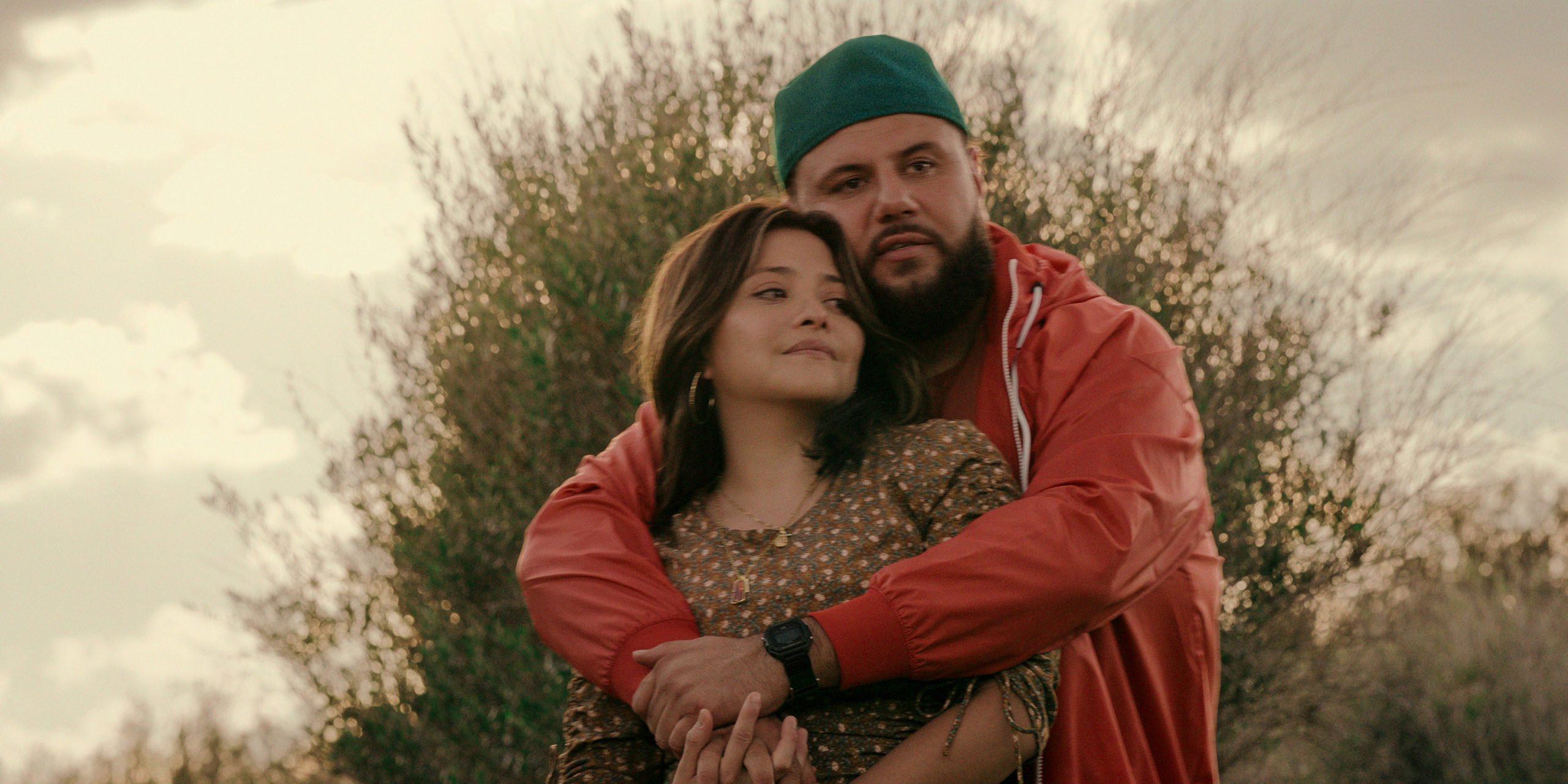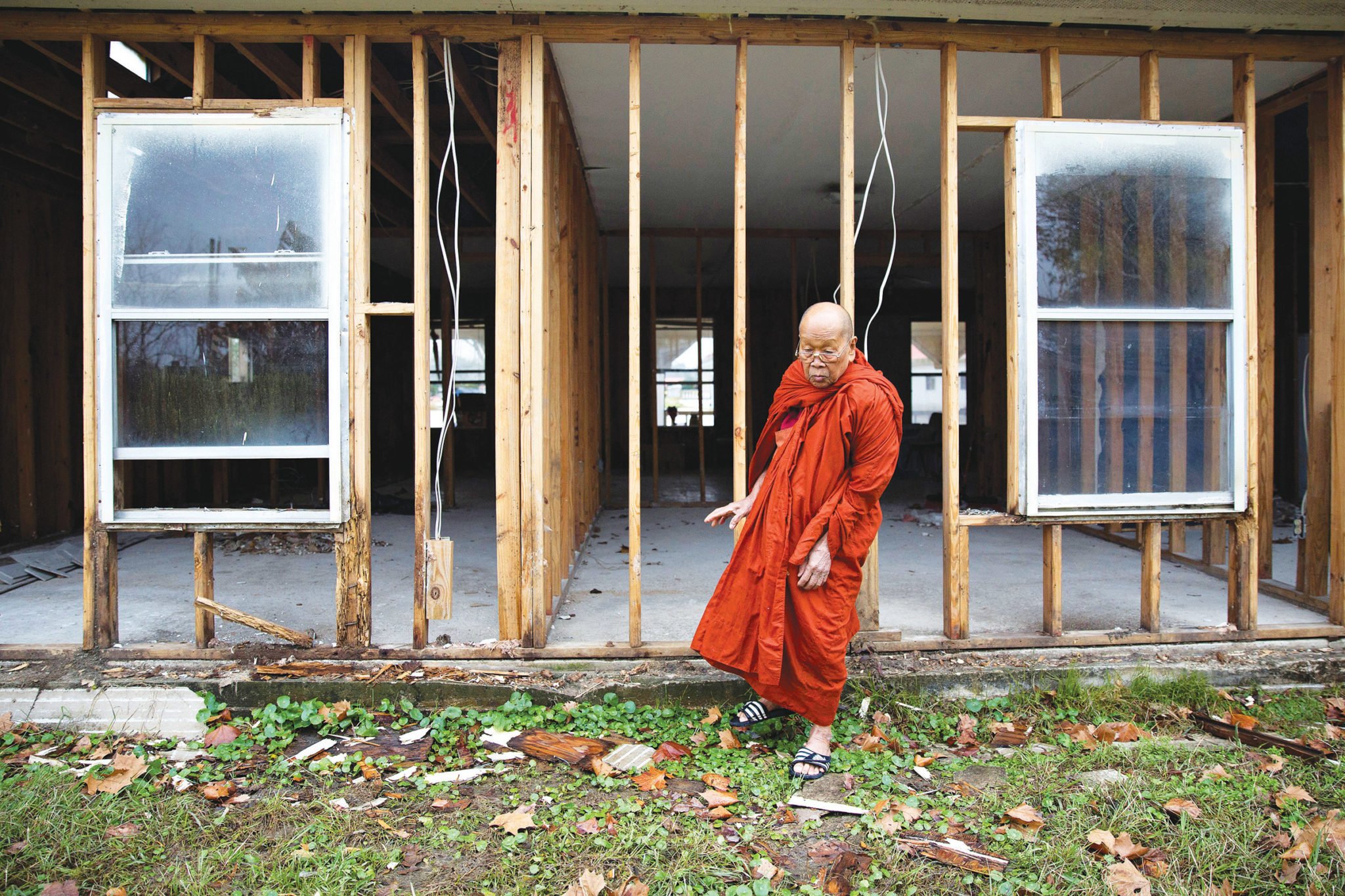
Big Trouble in Little Cambodia
After Harvey, a small refugee community in Brazoria County needed help. Neo-Confederates and radical anti-government groups showed up.
–
by Michael Hardy
@mkerrhardy
January 22, 2018
Take Highway 288 due south from downtown Houston and in about 40 minutes you’ll reach the unincorporated community of Rosharon, population 1,152. Settled in the mid-19th century by cotton and sugar planters, the area was once known as “Buttermilk Station” due to a resident’s charitable habit of bringing buttermilk to the crews of trains stopping at the local station.
In 1985, a Cambodian refugee living in Houston named Yani Rose Keo decided that Rosharon would make the ideal spot to found a small community where her fellow refugees could grow trakuon, or water spinach, a key ingredient in many Asian cuisines. Houston was already home to thousands of Cambodians, many of them farmers, who had fled the Khmer Rouge, and Keo persuaded a few families to relocate to her chosen patch of flat grassland, where she helped them erect makeshift homes and construct greenhouses.
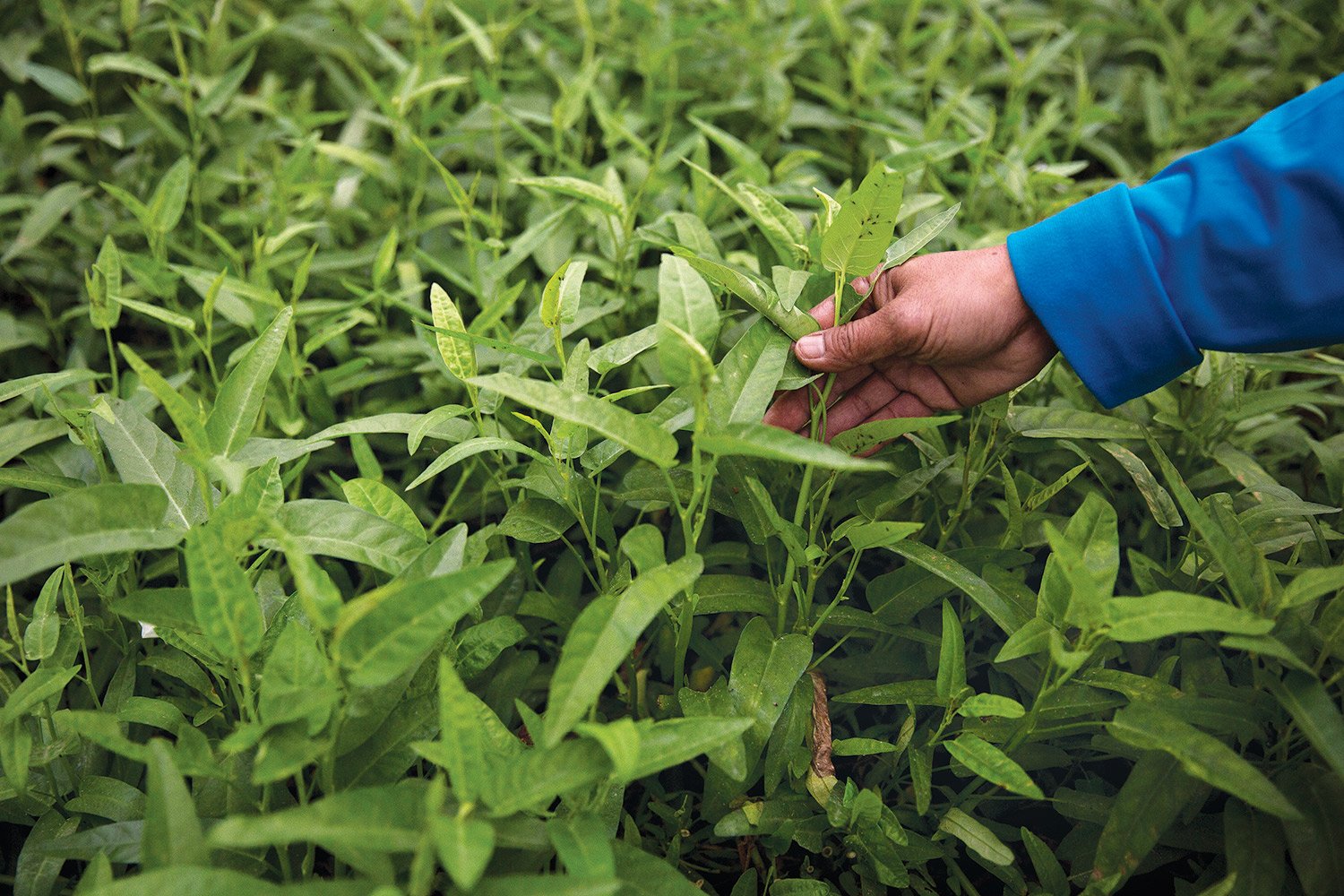
Against the odds, the community eked out a living, selling their water spinach to Whole Foods, Fiesta and Asian grocery stores. More refugees joined them, and the area became known as Little Cambodia. Within a decade the farmers had saved enough to buy their land outright and build a Buddhist temple that became the center of community life.
Dorn Som and her husband moved to Rosharon in 1997, buying a modest home on an unpaved street a few blocks from the temple. Her family had been rice farmers in Cambodia when the Pol Pot regime took power in 1975. They spent the next three years performing forced labor on a collective farm, barely surviving on a starvation diet of rice porridge. When Vietnam invaded in 1978, the family fled to Thailand, ending up in one of the enormous refugee camps along the Thai-Cambodian border. In 1989, after a decade of living in camps, they were finally granted entry to the United States, settling first in Houston before moving to Rosharon.
“I like living here,” the 57-year-old Som said through a translator. “I have my own house, my own land. I like the community, I like helping out at the temple.”
–
In late August, the Soms learned that Hurricane Harvey was barreling toward the Texas coast. Like most members of the community, they heeded meteorologists’ warnings and fled north in their car, ending up in the Dallas area. When they returned to Rosharon the following week, they found a scene of near-apocalyptic devastation. The Brazos River had jumped its banks during the storm. In Rosharon, about 4 feet of water surged into residents’ homes. Nearly every home in Little Cambodia suffered major water damage; many were total losses. When the Soms pulled up the carpet in their house, the floor underneath was still wet.
“I didn’t know what to do,” Som said. We were standing outside her house, which had a blue tarp covering the roof. A volunteer work crew was inside, installing a new floor. “It was very difficult for me to take.”
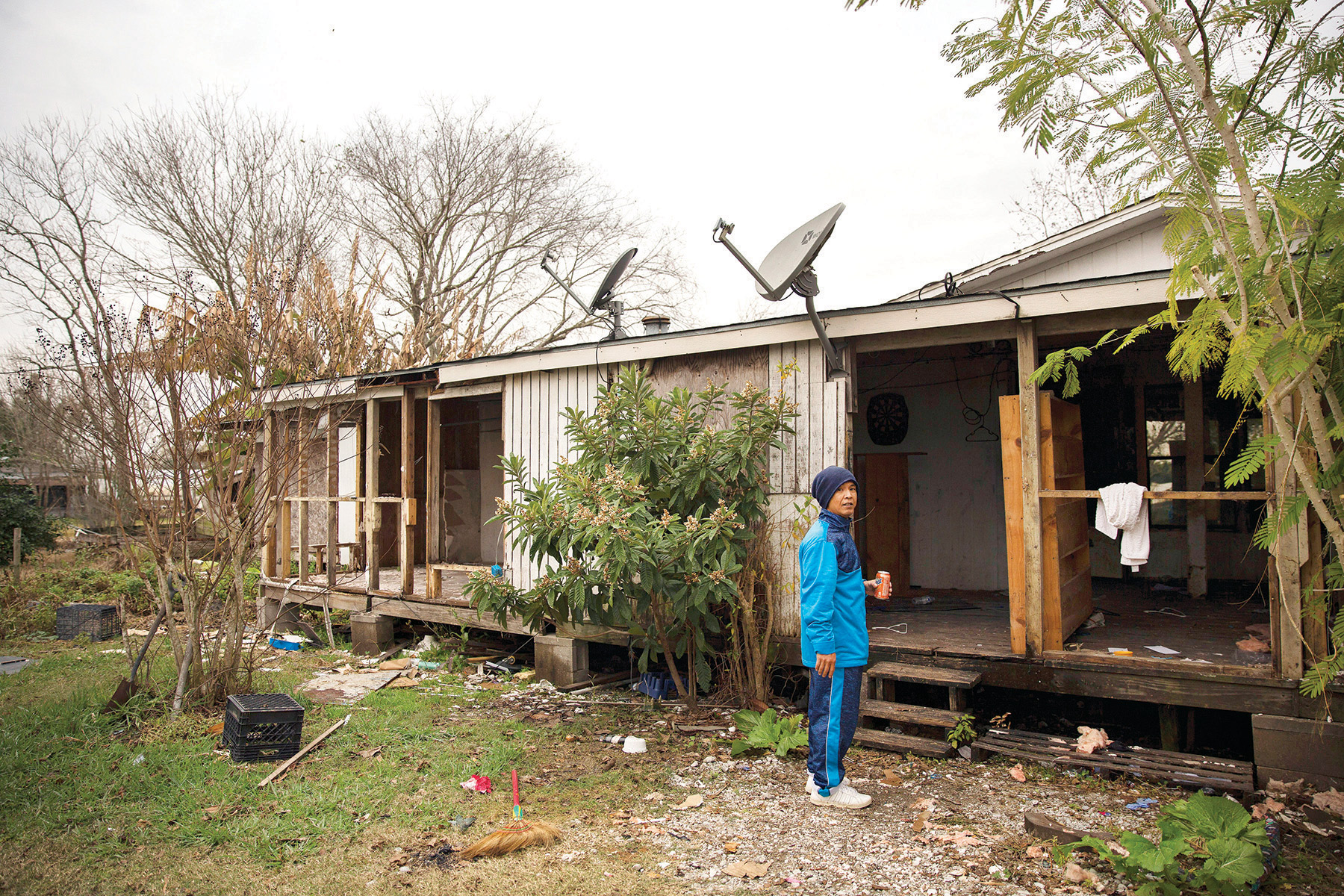
Everyone in Little Cambodia has a similar story. The Moun family waited out Harvey at a series of North Texas campsites, which allowed them to pitch their tents for free. The extended family of eight returned to find their home mold-ridden and uninhabitable. Ly Som Pong decided to ride out the storm in Rosharon. “I’ve been living here all my life, and never seen it like this — the highest the floodwater ever got was here,” he said, pointing to his calf. During Harvey, it was up to his chest.
In Harvey’s immediate aftermath, Brazoria County seemed to forget about Little Cambodia, which is perhaps unsurprising given that many weren’t aware it existed. For decades the community had largely fended for itself, relying on hand-built water wells and septic tanks. The power lines were among their few connections to the outside world.
Residents told me that no government official visited the community for at least a week after the hurricane. Once again, the former refugees were on their own. But not for long.
–
On the morning of September 5, just over a week after Harvey made landfall, a convoy of four trucks rumbled into a parking lot outside the small, orange-roofed Buddhist temple. Out stepped 12 people, all but two of them men, from a coalition of far-right groups, including the American Freedom Keepers, the Confederate Riders of America and the New York Light Foot Militia. The groups had been helping with Harvey relief in nearby Alvin when Francis Marion, the Freedom Keepers’ heavily bearded leader, learned about the community. As the convoy drove down gravel roads lined with discarded furniture, Marion could smell mildew and the rotting carcasses of drowned dogs. Set back from the road were rows of crumbling houses and sagging double-wides.
At the temple, the far-right groups were initially met with wary skepticism. “They had not seen any help,” Marion remembered. “There had not been Red Cross, there had not been FEMA, there had not been county, city, state. No one had been in there.” After the crew began unloading supplies, the residents were evidently persuaded that the group had good intentions.
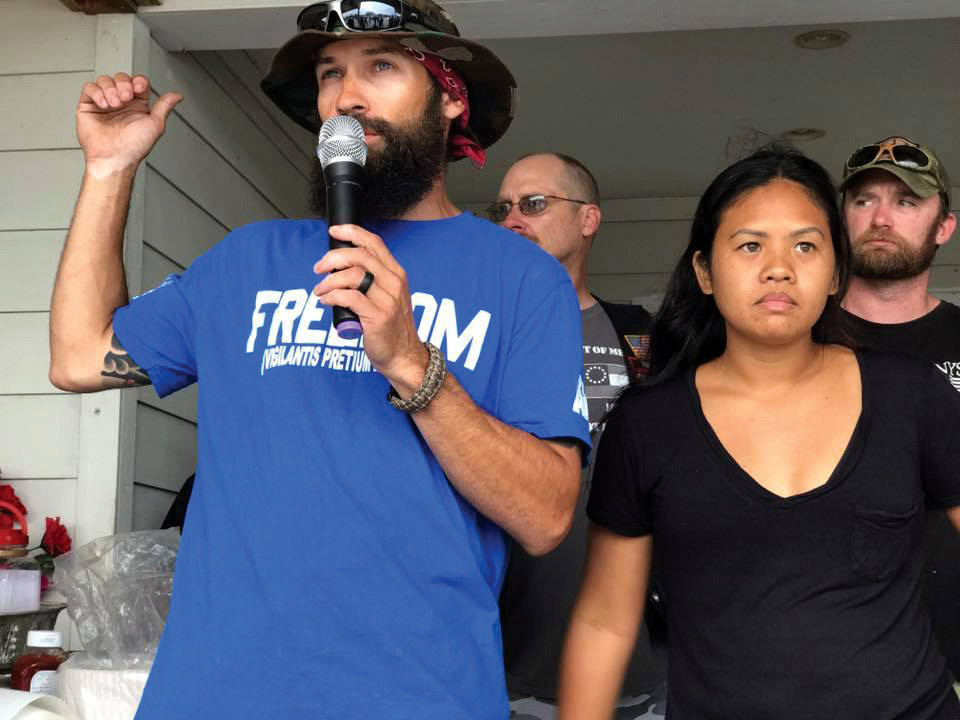
A video posted to the Freedom Keepers Facebook page later that day shows a bucket brigade of volunteers carrying sacks of rice, cases of water and other essentials into the temple. “I was like, ‘I don’t know who they are, but who cares?’” said Lisa Oum, who lives in a different part of Rosharon and was in Little Cambodia that day to help her father-in-law. “They’re coming here to help, right? So let’s all come together.”
That evening, the crew returned to Alvin, where they had established a makeshift headquarters at a warehouse. At a meeting that night, they decided to put out a call on social media for more volunteers. The crew returned to Little Cambodia the next morning to muck out homes. It would be another two and a half months before the last of them left.
“I’ve been living here all my life, and never seen it like this.”
At first, the community welcomed the strange men with the long beards and the Confederate flag jackets. “They introduced themselves around, they created a relationship with the elders,” Oum said. “I mean, they seemed nice.”
Next to the temple Marion set up a few folding tables and a laptop, on which he began building a database of every family’s needs. From this makeshift command post he dispatched work crews, coordinated deliveries from the Alvin warehouse and posted regular updates to Facebook, where the groups had started raising money to support their efforts. As volunteers from around the country arrived, Oum soon found herself cut out of the loop. “They took over and they started running things there,” she said.
The groups are affiliated with the so-called Patriot movement, which emerged in the early ’90s from the ashes of Ruby Ridge and Waco’s Branch Davidian compound, and whose ranks expanded dramatically during the Obama administration. The Freedom Keepers are an Oregon-based group whose members appeared at the Unite the Right rally in Charlottesville, Virginia, last summer brandishing assault rifles and wearing body armor. (Marion, the Freedom Keepers and the New York Light Foot Militia are among the defendants currently being sued by Charlottesville and Georgetown Law’s Institute for Constitutional Advocacy and Protection to prevent them from returning. They’re also being sued by two women injured in the car attack that killed Heather Heyer.) The Confederate Riders, a Missouri-based group, travel the country protesting the removal of Confederate monuments. The two groups share information and coordinate protests mainly through their Facebook pages, which each have 10,000-plus followers.
“They introduced themselves around, they created a relationship with the elders. I mean, they seemed nice.”
Both groups harbor extreme anti-government views and believe the Constitution is under siege by a range of nefarious forces. On the Freedom Keepers’ weekly Facebook Live broadcast, “The American Radio Show,” Marion rails against Hillary Clinton, George Soros, Muslims and undocumented immigrants. He portrays the Patriot movement as America’s last line of defense. “This country will fall if we don’t get into the middle of it and change it from within,” he said on the show in December. “We have to become a disease. Some bacteria and some infections are beneficial. And we need to become an infection inside the body.”
Having infected Little Cambodia, the far-right groups were not eager to give it up. They didn’t see an impoverished community that had been shamefully underserved for decades and abandoned by the government in its time of greatest need; they saw a proudly self-reliant people who had built a libertarian paradise. “It’s been a really awakening experience to see what it means for people to live on their own, live their way, make their choices,” Marion said in a Facebook Live video from Rosharon. “It really is the American dream.”
–
Keeping that dream alive meant keeping Little Cambodia free from the interference of relief agencies, which the Patriots feared would rob the Cambodian Americans of their independence. “When the group came in here, they asked people to stick with them, that they’re going to rebuild the community,” said Paul Boeur, one of the community’s elders, a group of older residents who help run the temple and adjudicate disputes. “So if any outside organizations come, just refuse them. Don’t let them come help.”
But word of the community’s plight had gotten out on social media, and that weekend a large number of volunteers from Houston drove to Little Cambodia to help out. Many were dismayed to find the community filled with militant-looking men in camo. Volunteer Sarah Ville overheard one of the Confederate Riders instructing people not to accept outside help. William Roberts, the owner of a Houston construction company, was told to drop off his donations at the temple, where he encountered Marion at the command post. “He came up and was like, ‘Who are you? Do you work for the government?’” Roberts recently recalled. “I said, ‘No, I’m donating supplies and want to know what the hell is going on down here.’”
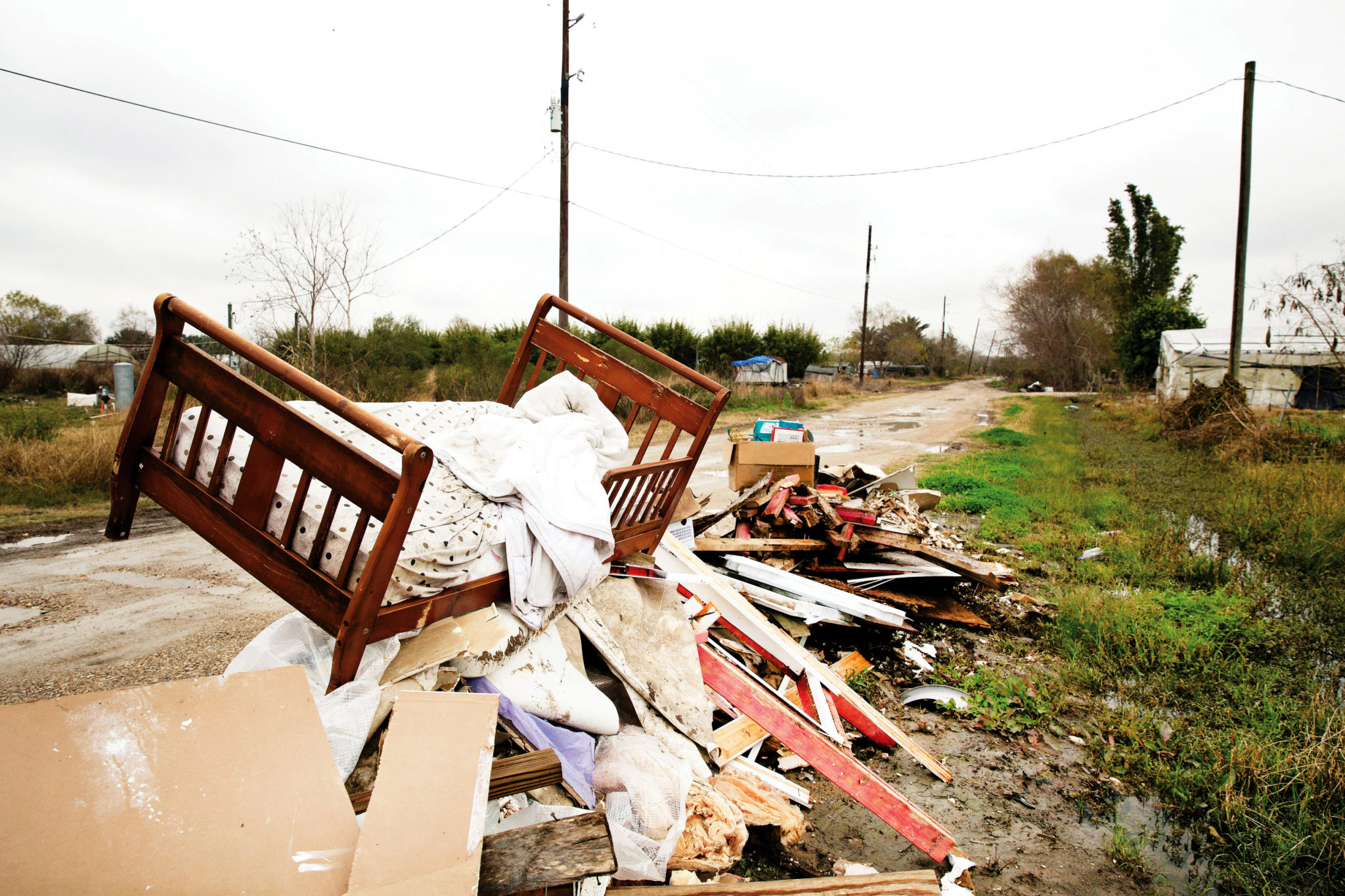
As they talked, Roberts noticed a crowd of men gathering around him, many with large knives on their belts and guns tucked under their shirts. “There was a bulge in the small of their backs,” he told me. “You could tell they were carrying.” (Marion said that he and his men usually left their weapons at the Alvin warehouse when they came to Little Cambodia.)
According to Roberts, Marion said that all donations must go through him. “These guys had basically taken over the community,” Roberts said. “They were brainwashing everybody so that everything would run through them.”
On September 10, a few agents from FEMA, the first since Harvey, finally showed up. They were accosted at the temple by a large group of aggrieved Patriots. “The guy told the FEMA guy, he said, ‘Get lost, man, we don’t need your help,’” remembered Boeur, who was present at the confrontation. “The FEMA guy left this place with not much pleasure.”
The groups claimed to be acting on behalf of the community. But even Tammy Lee, one of the Patriot volunteers, acknowledged that many residents wanted government assistance. “You had a community that was divided on wanting FEMA and government aid,” she said.
Little Cambodia resident Lisa Southimath, who worked closely with the far-right groups throughout their stay, said they never discussed ideology. “That’s not something for me to ask them. That’s their personal life. Whatever group they are, whatever they do, they did not bring that to the temple.”
FEMA later issued a statement saying it was “concerned for the safety and welfare of survivors as well as our employees” and would “follow the state’s guidance as to how we will engage this community.” On September 13 the FEMA agents returned to Rosharon, this time escorted by officers of the Texas Department of Public Safety. (A FEMA spokesperson declined to comment, telling me the organization wanted to “move forward.”)
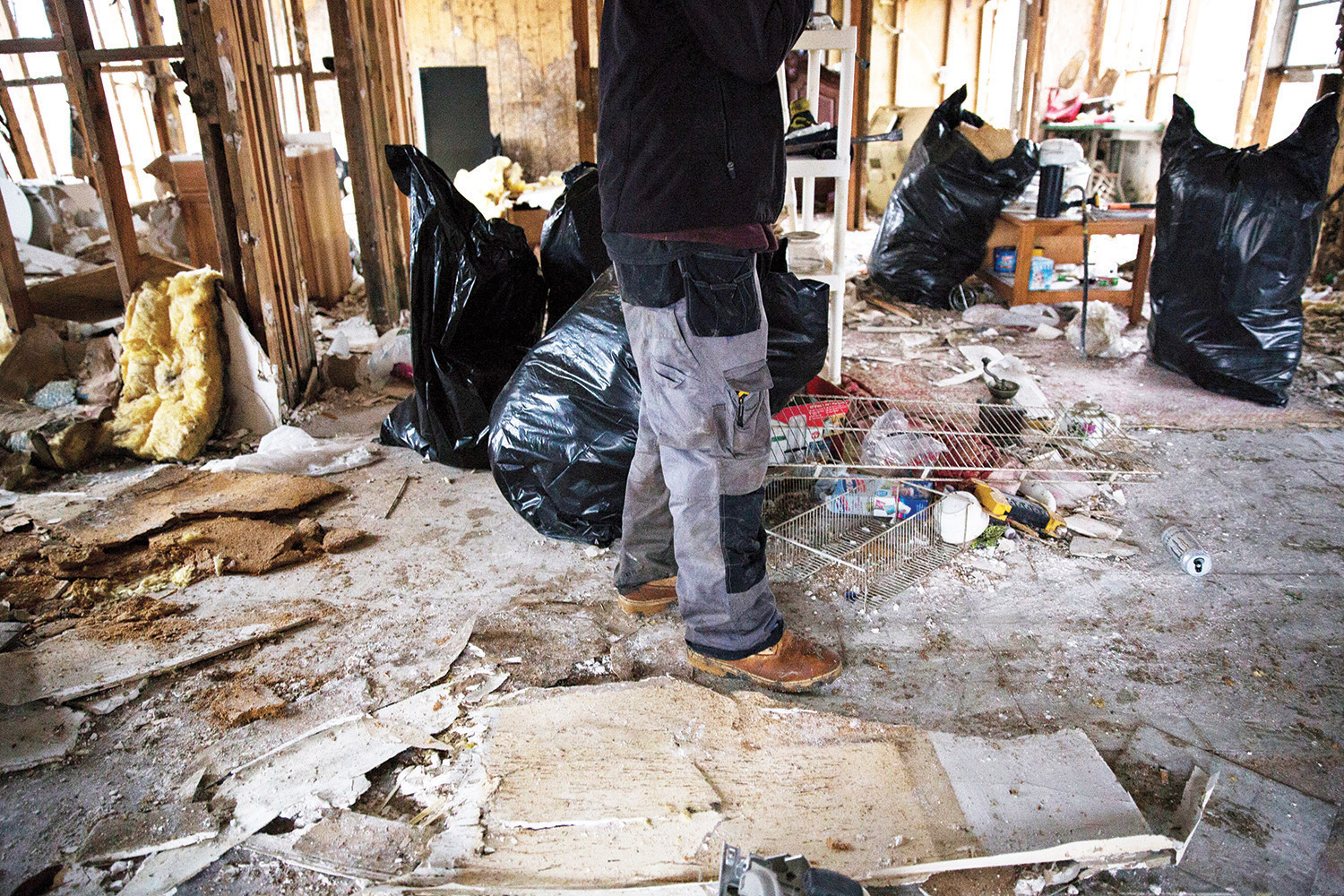
But even as FEMA finally got to work, tensions between it and the far-right groups remained high. “Here comes this government group that wants to come in and instantly block us, get us out of there,” Lee recalled. “We are not needed suddenly anymore. So, you know, things got intense between the volunteers and the government.”
The next day, ABC 13 News reporter Miya Shay arrived in Little Cambodia to investigate reports she’d been receiving about the Patriots. She, too, was met with hostility. “You’re trying to find a story that you can put on the five o’clock news to get ratings and sell commercials,” Marion tells her in a Facebook video. “You can get in your car and leave, this is private property.”
“Fucking scumbag,” adds Lee, who was shooting the video.
(Marion told me that Shay was asking around town about “white supremacists,” a label he strenuously rejects. In her two television news reports, Shay used the term “citizen groups.”)
“Whatever group they are, whatever they do, they did not bring that to the temple.”
In the following days, Brazoria County Sheriff Charles Wagner dispatched several patrol cars to Little Cambodia to monitor the situation. The sheriff’s office maintained a 24/7 patrol in the community for the next month. Marion believes the county was trying to scare Little Cambodia into kicking out the Patriot groups. “The county didn’t want us in there, because we stepped in the way of their money funnel,” he told me. “If volunteers can do it, then contractors don’t. If contractors don’t, then the money doesn’t fall.” (Brazoria County officials declined repeated interview requests.)
Little Cambodia didn’t kick out the Freedom Keepers or Confederate Riders, but community leaders did insist that they begin cooperating with FEMA. “We had a meeting to say we were accepting FEMA,” Boeur said. “If you want to stay and help, we’re grateful, but if you guys don’t want FEMA at all, we don’t like that. We have to have FEMA come to help too.”
At first, Boeur told me, the community hadn’t known what FEMA was. Now, though, “People started to realize that we’re not going to walk away from the federal government,” Boeur said. “It’s a free country, but you have to obey the rules of the government. So we started to invite FEMA back, and [the far-right groups] started to fade away.”
Though some members of the groups did leave, many remained, including Marion. “We had people lose jobs, lose their rentals,” he told me. “I stayed so long I overstayed my wedding. I flew home to get married and then flew back to keep working.” Rick Cameron, the leader of the Confederate Riders, headed back to Missouri in mid-November, about two and a half months after first arriving. He estimated that his group cleared out Sheetrock and insulation from about 100 homes. “There was more to do, but we just couldn’t stay any longer,” he told me. “We’ve got our own lives too, and those got put on hold.”
The recovery continued, with Lisa Oum again running the relief efforts. Sewa International, a Hindu relief organization, also took a leading role. Church groups from around the Greater Houston area continued to send donations and volunteers. Residents began receiving the FEMA checks they had applied for, although the payouts were rarely enough to cover their rebuilding costs.
When Houston psychologist Peta Ledbetter first visited Little Cambodia in September to volunteer, she was struck by how the residents acted around members of the Patriot groups. “You could see everybody was very intimidated,” she said. “It was kind of hush-hush and ‘Thank you very much.’ ‘Do you need anything?’ ‘No, no, we’re good.’” Ledbetter returned to the community several times to provide free counseling services, and noticed a big change once the Patriot groups finally decamped. Today, she said, “They’re less intimidated, they’re more vocal about asking questions. They’re not scared.”
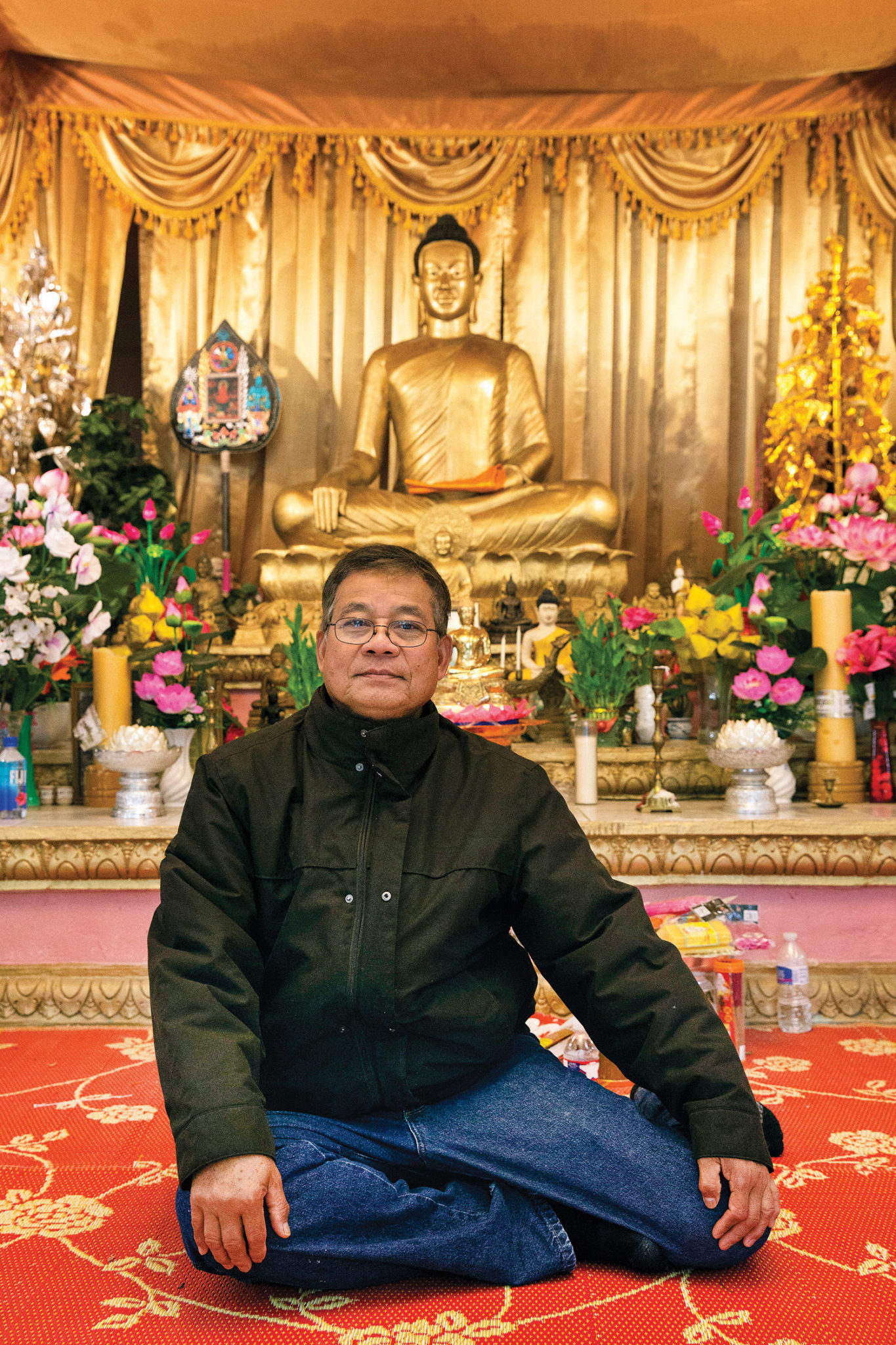
The community’s needs remain enormous; dozens of families are still living with friends or in temporary quarters while their homes undergo repairs. Every night, all eight members of the Moun family sleep side by side on the floor of a small plywood shack with no heating or air conditioning. They cook meals on an electric stove set up inside their otherwise bare house, which has been taken down to the studs. For those whose homes were total losses, it will take even longer to recover. To get a building permit from the county, residents must pay hundreds of dollars in certification and inspection fees.
Still, the community remains resilient. All that was left of one elderly couple’s house was a single working toilet in the middle of a vacant dirt lot, shielded on three sides by a blue tarp. The man, Vantham Im, was cooking a piece of chicken in a toaster oven that sat on the bare ground. His wife, Hoeun Pok, rushed over to hug me; her head barely reached my chest. She showed me their large greenhouses and the place where they slept: a raised wooden platform under an improvised tent. For a couple who had lost nearly everything, they displayed a remarkable equanimity.
“You have to understand their mindset,” Oum told me. “They’ve been through a war. They’re survivors. They know how to live this way.”
Many members of the Patriot groups, for their part, plan to return in April to celebrate Cambodian New Year, purportedly at the community’s request. Marion sees Little Cambodia as the beginning of a new direction for his group. “We’re getting more community-based,” he told me. “We’re setting up to do more humanitarian and hurricane and disaster relief next year.”
Top photo by Pu Ying Huang.
